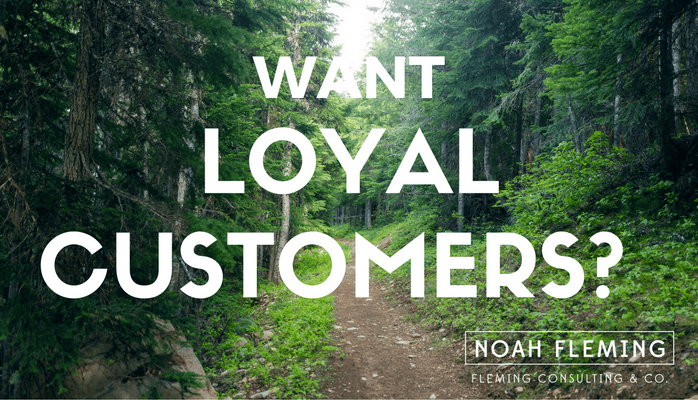My new book, The Customer Loyalty Loop hits the shelves in just over a month. Daniel Pink, author of such NYT bestselling books as Drive and To Sell is Human said, “The Customer Loyalty Loop is a fun, easy to read, yet science-based look at all things customer-related. Put Noah Fleming’s advice to work, and learn how to identify customers, win them over, and keep them coming back for more.”
This book has a really simple premise. To successfully create a remarkable and memorable customer experience, your company needs to develop the right set of processes throughout the entire customer lifecycle and consistently deliver the expected experience. I’ll show you how.
I’ll show you how.
Many organizations aren’t thinking this way. They’re thinking; more sales, more conversions, more traffic, more people through the doors, more leads, more opportunities. But they’re failing to consider the processes through each particularly important and vital stage of business (sales, service, marketing, delivery, retention, etc.) to keep people coming back again, and again, and again.
Embracing the Customer Loyalty Loop can yield a powerful competitive advantage that will make it hard for your competitors to copy, and will drive new revenue to your bottom line. Despite all that high value, the idea of developing processes around the entire customer experience does not come naturally or easily to most companies.
In my work with clients, we’ll often start by looking at one specific area. It’s almost always the sales department, because starting a project with the goal of increasing revenue is considered sexy, and focusing on retention efforts is considered boring (although both will bear tremendous fruit). But this gives us the baseline. For example, if the company has 17,000 employees and there isn’t an effective, measurable, sales process that’s known throughout the entire sales team, then we can almost guarantee there’s no onboarding process, or no retention process, or no past-customer reactivation process.
Look, processes don’t need to be complicated. This isn’t about a company like McKinsey swooping down to deliver your next five-year strategy plan. I’ve worked with smaller 10-20M organizations where a simple five-page sales process–with expectations of measurable, consistent activity–was all that was required to make dramatic shifts in their sales results. I’ve seen simple retention processes, like the Pick-3 process, rapidly change the perception of a client in their customer’s eyes, resulting in more sales, more often, and more revenue.
I’ve said this before; customer success isn’t easy, but it’s simple. This isn’t just about building a more memorable and remarkable experience for your customers; it’s also about creating a powerful experience that’s easier for your people to deliver, consistently, each and every time.
Your Weekly Challenge:
Give yourself a score from 1-5 on each of the following. 5 being excellent and 1 being poor.
- We have different processes for each stage of the customer experience, and they support each other and fluidly move the customer from one stage to the next (i.e. marketing, sales, service, post-purchase service).
- We have a fully defined sales process.
- We have a new customer onboarding process.
- We have a plan in place for regular, consistent communication with our leads, prospects, customers, and past customers. They all receive messaging congruent with their customer type.
- We have a customer follow-up & nurturing process in place to generate referrals, word-of-mouth, and repeat purchases.
If you’re interested, feel free to send me your scores.
If you scored a twenty or higher, you’re likely doing an excellent job and delivering a remarkable customer experience. I’d be willing to guess that you have happy and delighted customers. However, if you’re not seeing the results you’d like (referrals, word-of-mouth, new purchases), it’s likely that with a few simple tweaks we could rapidly improve your results.
If you scored between 15-20, then this likely means that you’ve recognized the importance of what I’ve been preaching for a while and are working towards putting the right processes in place. Let me help you speed up the process.
If you scored between 10-15, you’re missing a huge opportunity. In all honesty, many of the very successful organizations I’ve worked with would still start with a score between 10-15 on these five questions before we start working together. If you’re in here, we can quickly move you up. Contact me for details.
If you scored under a 10, you’re in trouble. Every day, more and more companies are recognizing the power to be yielded in these areas. Even companies like Wal-Mart who claimed years ago that you could easily defeat them by delivering in areas they couldn’t (like personalized, friendly service,) are finding ways to compete.
As my business coach, Alan Weiss, often says, if not now, then when?
